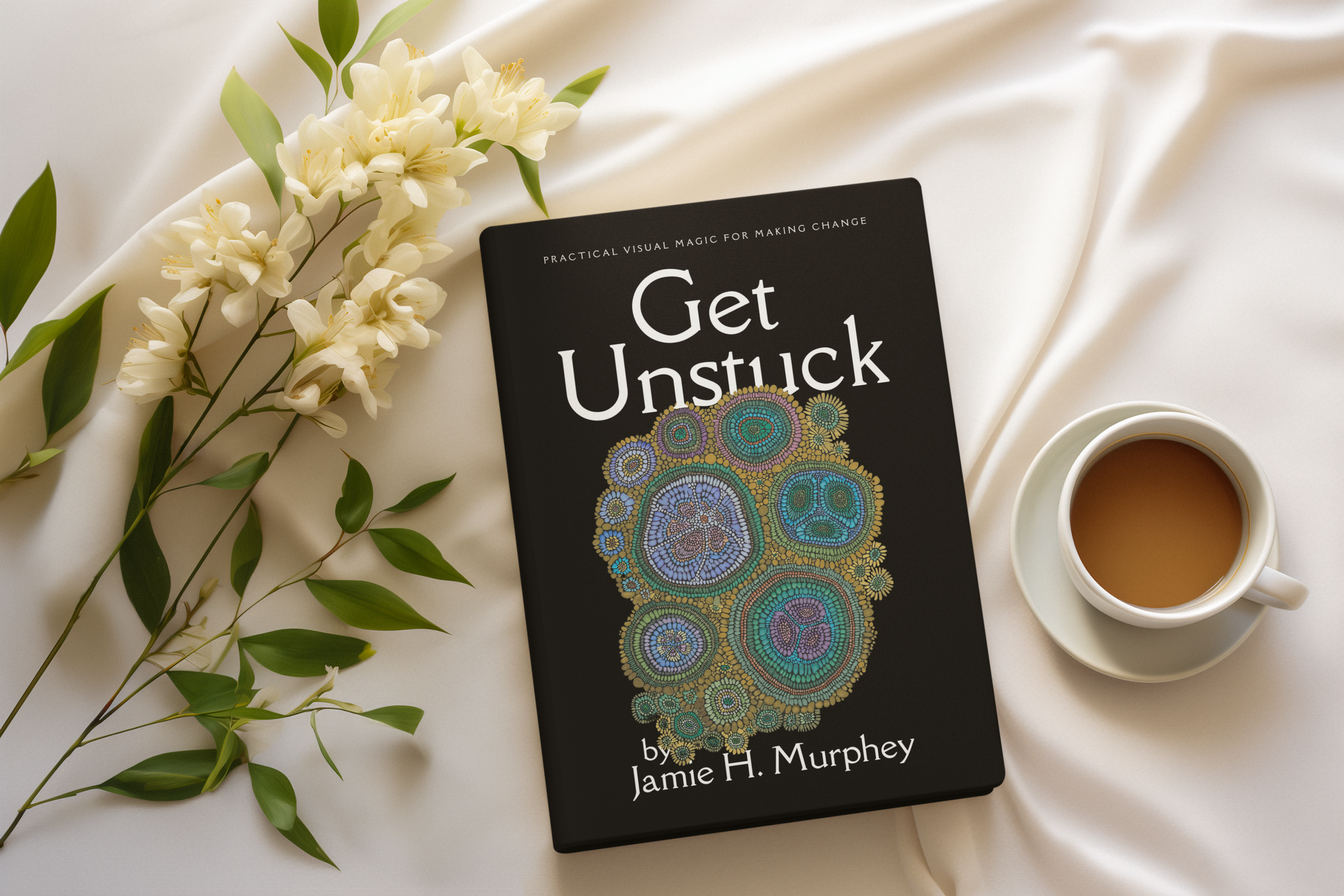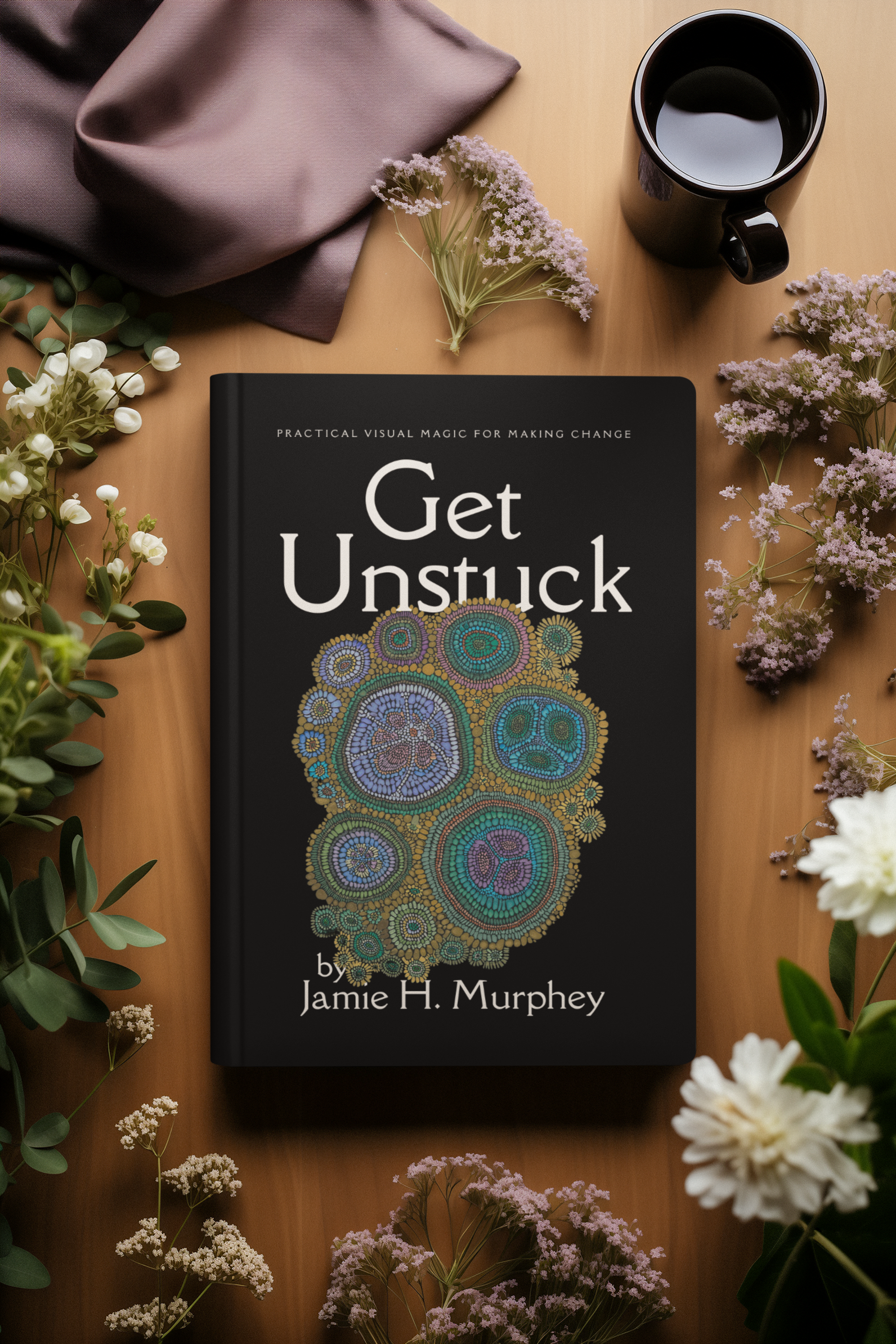Getting Thoughts Out of Your Head Changes Everything
Picture this: it's 2am, and your brain is doing that thing.
You know the thing I'm talking about. The endless loop of thoughts spinning through the same concerns over and over. Should you take that job? What about the money situation? That conversation you've been avoiding? Each attempt to think your way out just creates more chaos, more overwhelm, more of that awful sensation that you're trapped in your own head.
It feels like you're drowning in mental quicksand.
If this sounds familiar, you're not alone. Whether you're an entrepreneur overwhelmed by endless decisions, a creative person paralyzed by too many possibilities, a parent juggling competing priorities, or anyone who's ever felt like their own thoughts were working against them—this mental quicksand is more common than you think.
Here's what's actually happening: your brain is trying to hold too many pieces at once. Like a computer with too many programs running, everything slows down. Your working memory—the part of your brain that juggles active thoughts—can only handle about four to seven items before it starts to buckle under the pressure.
But here's the good news. There's an ancient solution, one humans have been using since we first learned to make marks on cave walls.
We externalize. We get it out of our heads and into the world.
The Genius Secret History of Thinking
Humans have probably never just thought with their brains. We've always thought with our hands, with marks, with the physical world around us.
Leonardo da Vinci understood this intimately. His notebooks weren't just records of his thoughts—they were the place where his thoughts actually happened. He thought by drawing, solved problems by making them visible. His flying machines existed first as lines on paper, and those lines taught him what was possible.
Charles Darwin did something similar when he was wrestling with the implications of his own theory. Instead of trying to hold all the potential objections in his head, he made a list. "It is good to have it on paper," he wrote. Seeing the problems laid out in front of him helped him solve them one by one.
Maya Angelou couldn't write at home—too many distractions. Instead, she rented a small room with nothing but a bed, a Bible, a thesaurus, and yellow legal pads. "I can't see the poetry when it's all in my head," she said. "I have to see it on the page."
What all these brilliant minds understood intuitively, science now confirms: our thoughts don't just live in our heads. They live in the dynamic relationship between our minds and the tools we use to extend them.
Why Your Brain Loves This (The Science)
When you externalize a thought, you're doing something profound: you're taking an abstract idea and giving it a physical form. This isn't just recording—it's transforming the intangible into the tangible.
Cognitive Load Theory shows us that our brains have limited processing power. When we try to hold too many complex thoughts at once, we overload our working memory. But when we externalize those thoughts, we free up mental space for the deeper work of making connections and finding patterns.
Dual Coding Theory explains why this works so much better than just thinking. When you give a thought physical form, your brain processes that information in two ways: as language and as imagery. This dual processing creates stronger, more memorable connections.
And here's the magic part: once your thoughts are externalized, they become manipulable. You can move them. Group them. See how they relate to each other. Suddenly, that tangled mess in your head becomes a puzzle you can actually solve.
The Day I Discovered This (My Philadelphia Breakdown)
I remember the first time I experienced this transformation personally. I was living in Philadelphia, feeling completely stuck about whether to leave my corporate job. The thoughts were spinning endlessly in my head—the safety of the paycheck, the dream of creative freedom, the fear of making the wrong choice, the pressure of expectations.
When I finally applied what I now call the first step of getting unstuck, I was shocked. In less than twenty minutes, I went from feeling completely overwhelmed to having a clear map of what I was actually working with.
I had 47 different concerns swirling in my head. Forty-seven! No wonder I felt overwhelmed. But when I could see them all laid out, patterns emerged that were invisible when everything was churning in my mental quicksand.
For the first time in months, I could see what I was actually working with instead of drowning in the chaos of it all.
Who This Works For (Spoiler: Probably You)
This method is particularly powerful for:
Overwhelmed decision-makers who have too many variables spinning in their heads and can't see the forest for the trees.
Creative professionals who feel paralyzed by infinite possibilities and need a way to sort through the creative chaos.
Entrepreneurs and business owners who are juggling multiple priorities and can't figure out what to focus on first.
Anyone going through major life transitions - career changes, relationship decisions, moves, or any time when the usual decision-making process feels broken.
People who've tried traditional productivity methods but still feel stuck because the problem isn't time management—it's mental clarity.
The beautiful thing about this approach is that it works whether you're dealing with a specific decision or a general sense of overwhelm. It meets you wherever you are and helps you see clearly what you're actually working with.
Where This Fits in Your Life
You don't need to carve out hours for this work. The first step of getting unstuck can happen at your kitchen table, in a coffee shop, or even in a conference room between meetings. It works when you're:
Facing a specific decision that feels too complex
Feeling generally overwhelmed but can't pinpoint why
Stuck in analysis paralysis
Knowing something needs to change but not sure what
Preparing for important conversations or presentations
Planning projects or setting priorities
The method scales beautifully—it works for quick clarity sessions when you need to unstick a specific situation, and it works for deeper exploration when you're ready to examine bigger life patterns.
Why Most People Stay Stuck (And How This Is Different)
Most approaches to getting unstuck focus on pushing through, using willpower, or just "thinking positive." But when you're trapped in mental quicksand, more thinking isn't the solution—it's often the problem.
This method works because it recognizes that your brain has limitations, and instead of fighting those limitations, it works with them. It transforms your relationship with your own thoughts, turning them from mental prisoners into collaborative partners.
The first step isn't about solving everything—it's about creating the conditions where solutions can emerge naturally. It's about moving from chaos to clarity, from overwhelm to understanding, from mental quicksand to solid ground where you can actually think clearly about what comes next.
And that's just the beginning. Because once you can see what you're working with clearly, you're ready for the real transformation: learning to dialogue with the parts of yourself that feel stuck, scared, or resistant. That's what we'll explore next.



